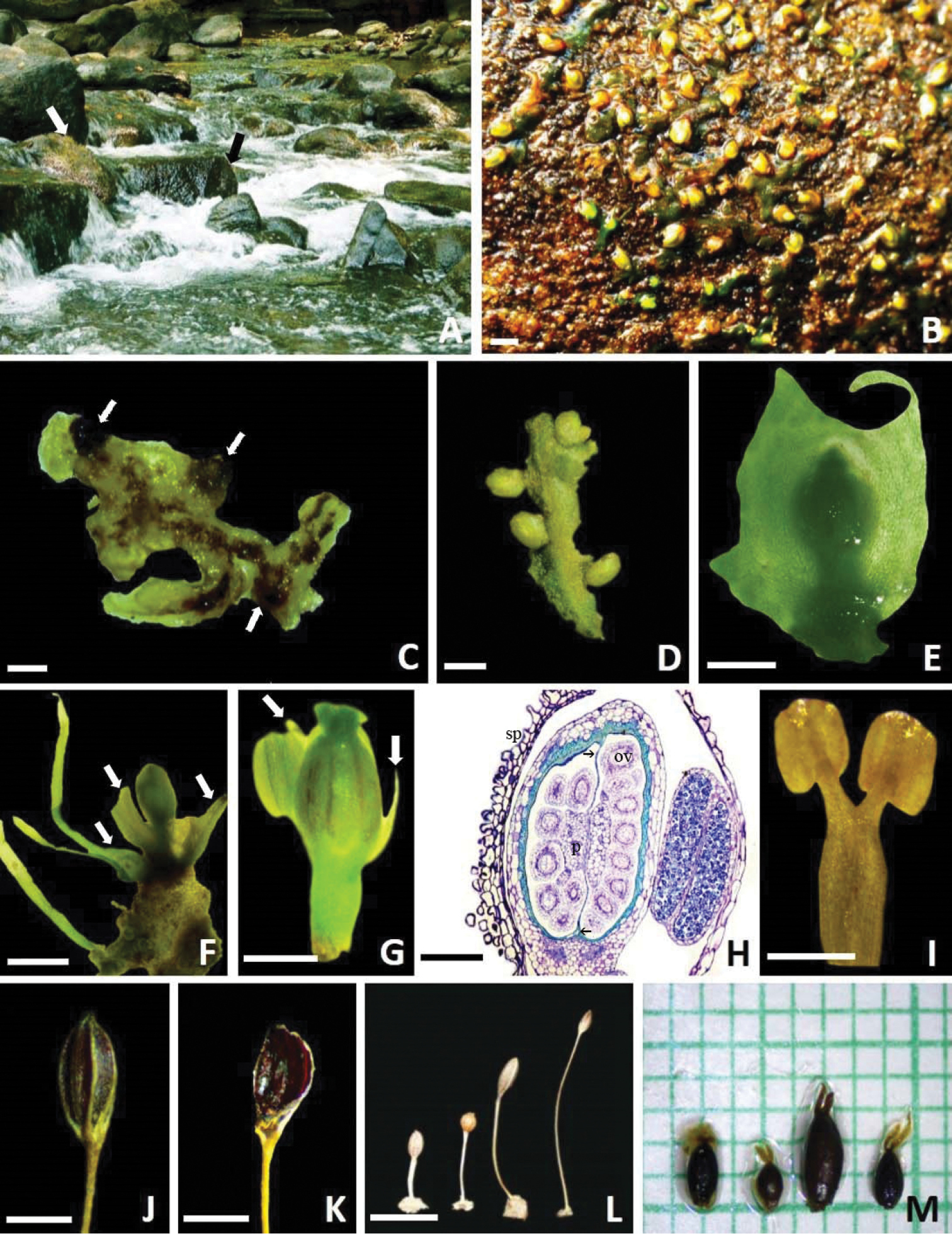
|
||
|
Zeylandium manasiae A habitat and habit showing plants on exposed rock surface (arrows) B habit of the plant showing solitary horizontally appressed flowering shoots C ventral surface of the thalli with haptera (arrows) D thalli bearing floriferous shoots on margins and point of branching E a young flower bud covered by bracts F floriferous shoot with flower subtended by two bracts. A pair of leaves can also be seen (arrows) G flower with spathella removed showing an anther and two tepals (arrows) H longitudinal section of floral bud enclosed in a spathella (sp). The ovary is bilocular and divided into two unequal halves by an apical septum (arrows). Numerous anatropous ovules (ov) are borne on a swollen placenta (p). One of the anthers in section shows a copious amount of dyad pollen I forked andropodium with two anthers J a mature capsule K a dehisced capsule showing persistent valve L comparative fruit morphology of congenerics. (Left to right) Z. maheshwarii, Z. lichenoides, Z. olivaceum and Z. manasiae M Comparative morphology of stigma. (Left to right) Z. maheshwarii, Z. lichenoides, Z. olivaceum and Z. manasiae. Scale bars: 2 mm (B); 3 mm (C); 2 mm (D); 1 mm (E); 2 mm (F); 0.5 mm (G); 0.2 mm (H); 0.5 mm (I); 1 mm (J); 1 mm (K); 5 mm (L). |